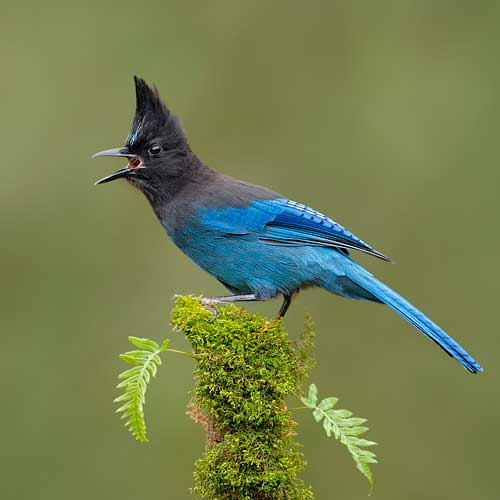This avian creature boasts a remarkable triangular feathered crown that is split in half between black and blue hues. The distinct separation of colors adds to its striking appearance.
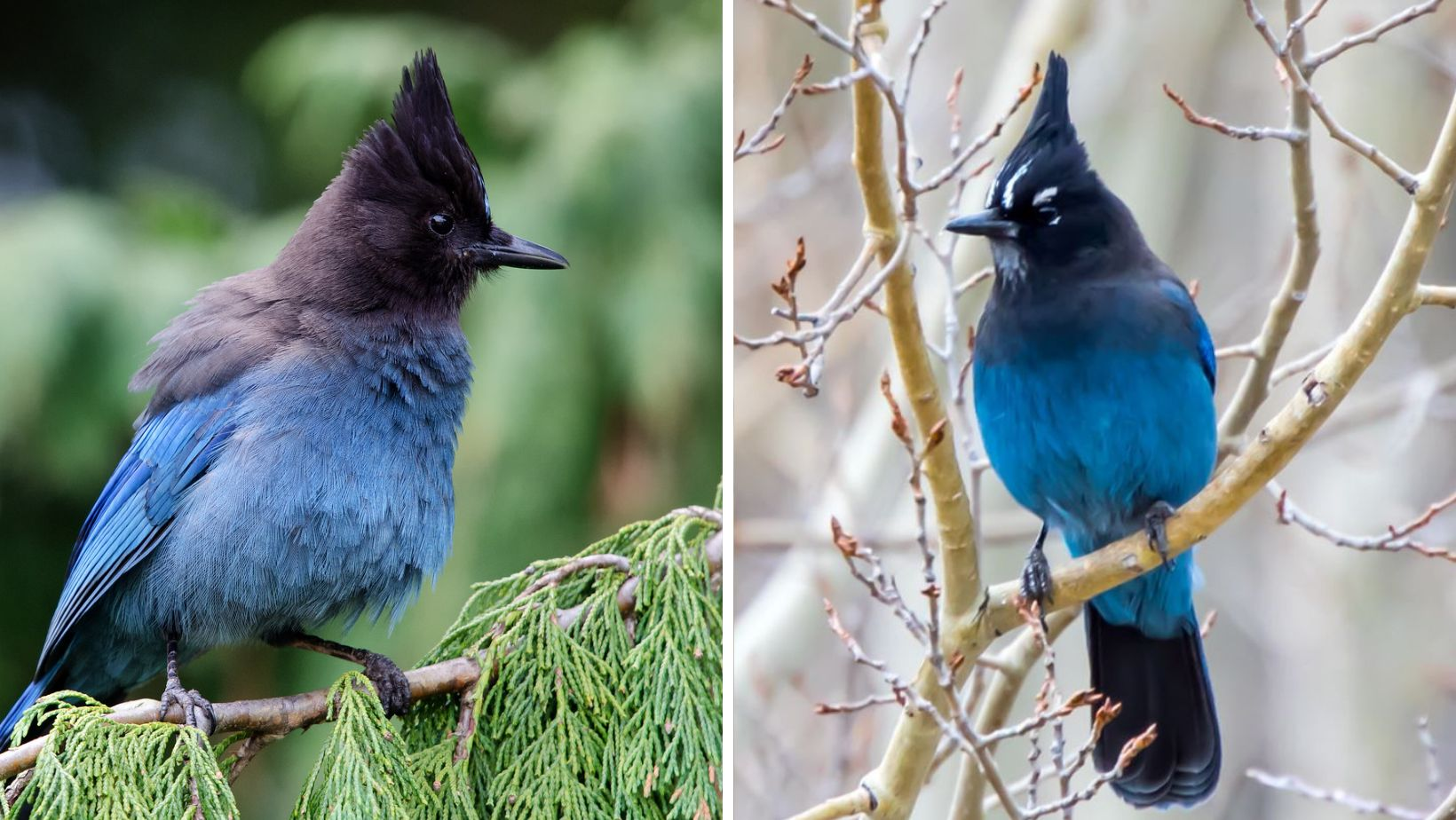
Introducing the Stellers Jay: A Fascinating Bird Species
Have you ever heard of the Stellers Jay? This captivating bird species is one that you definitely don’t want to miss. Whether you’re an avid birdwatcher or simply enjoy the beauty of nature, the Stellers Jay is a fascinating creature that is worth learning about.
Unlike other birds, the Stellers Jay isn’t known for its bright and vivid colors. Instead, it sports a more subdued dark blue and black plumage with a distinctive crest on its head. Its striking appearance makes it easy to spot in the wild.
One of the most unique traits of the Stellers Jay is its incredible intelligence. These birds are known for their ability to mimic sounds, including human speech! They are also incredibly resourceful, often using their strong beaks to crack open nuts and seeds.
If you’re lucky enough to spot a Stellers Jay in the wild, take some time to observe its behavior. These birds are highly social and can often be found in groups of up to a dozen individuals. Their vocalizations are also a joy to listen to, with a wide range of calls and songs that are both complex and beautiful.
In conclusion, the Stellers Jay is a remarkable bird species that deserves our attention and admiration. With its striking appearance, intelligence, and sociability, it’s no wonder that this bird has captured the hearts of bird enthusiasts and nature lovers around the world.
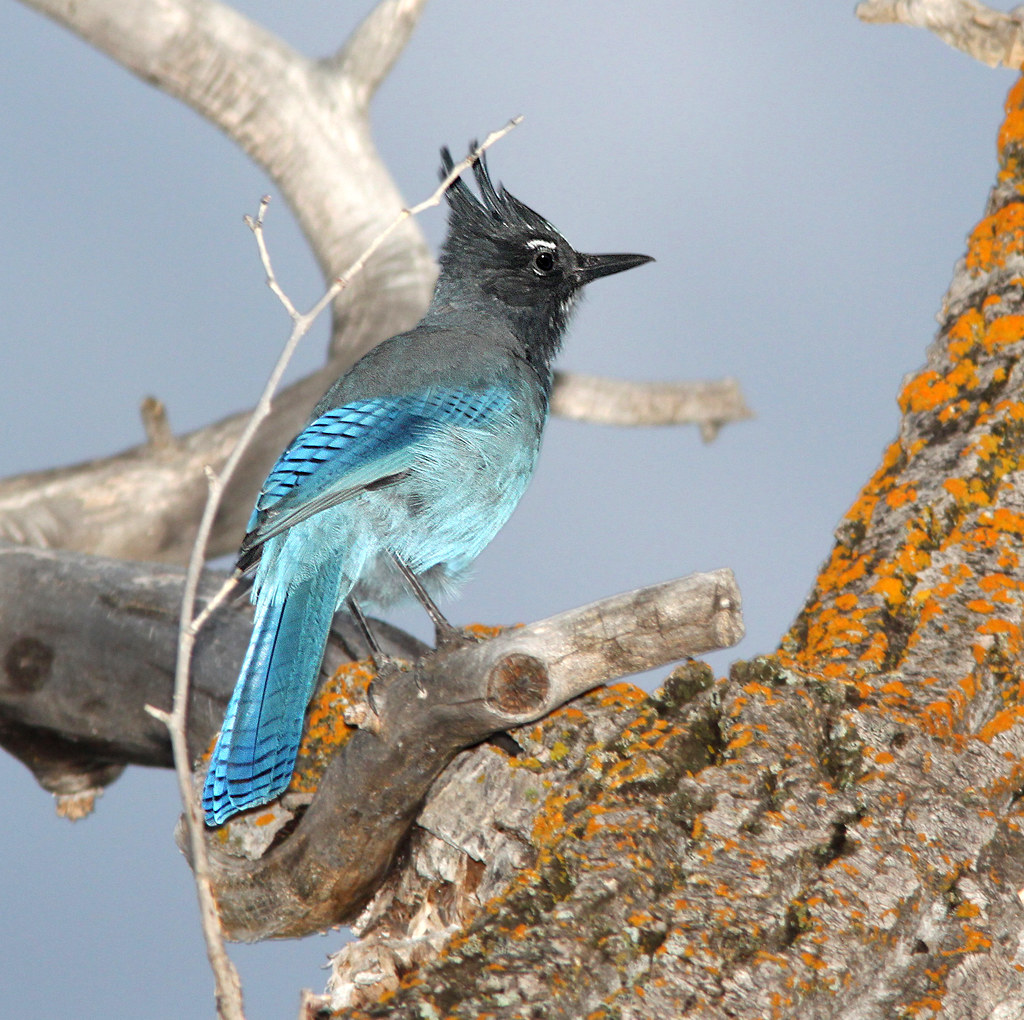
The Steller’s jay is a type of jay that is closely related to the popular Blue jay. Unlike other jay species, the Steller’s jay appears dark from afar and lacks the white underparts. Their head is almost entirely black, while their body is blue. Although they have white markings above their eyes, they can be barely noticeable. These songbirds are quite big with round wings and a long tail. They have a long, straight, and strong beak, and they also have a prominent triangular crest that stands upright on top of their head.
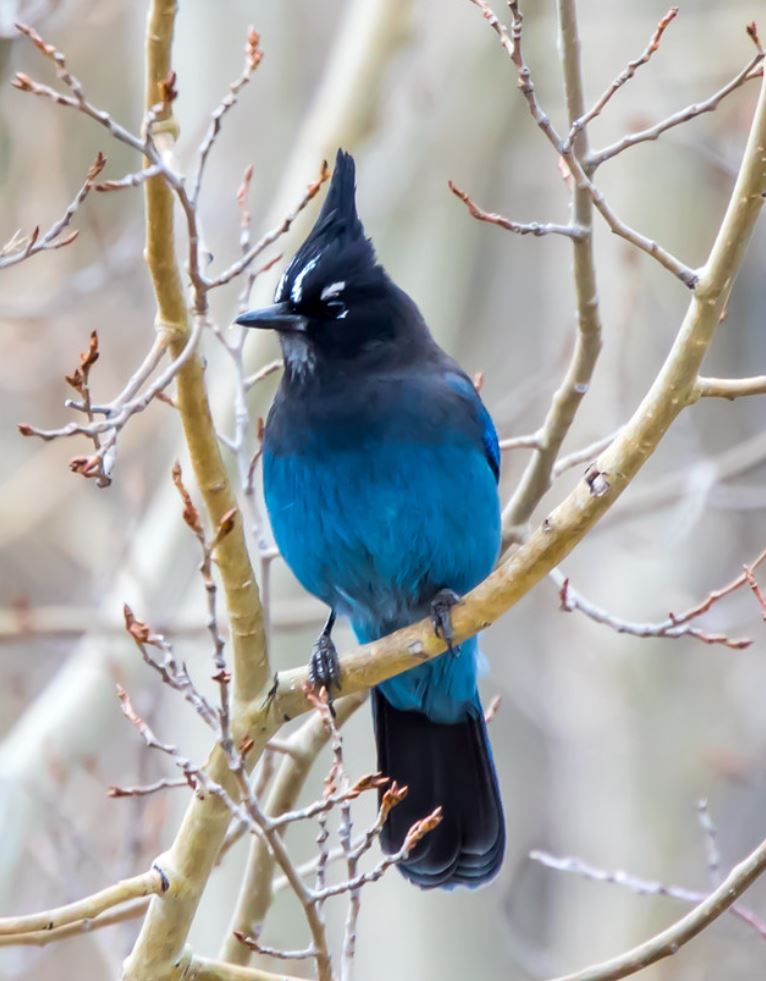
The Steller’s Jay can be found in the western part of North America and goes by several names, such as the pine jay, mountain jay, and long-crested jay.
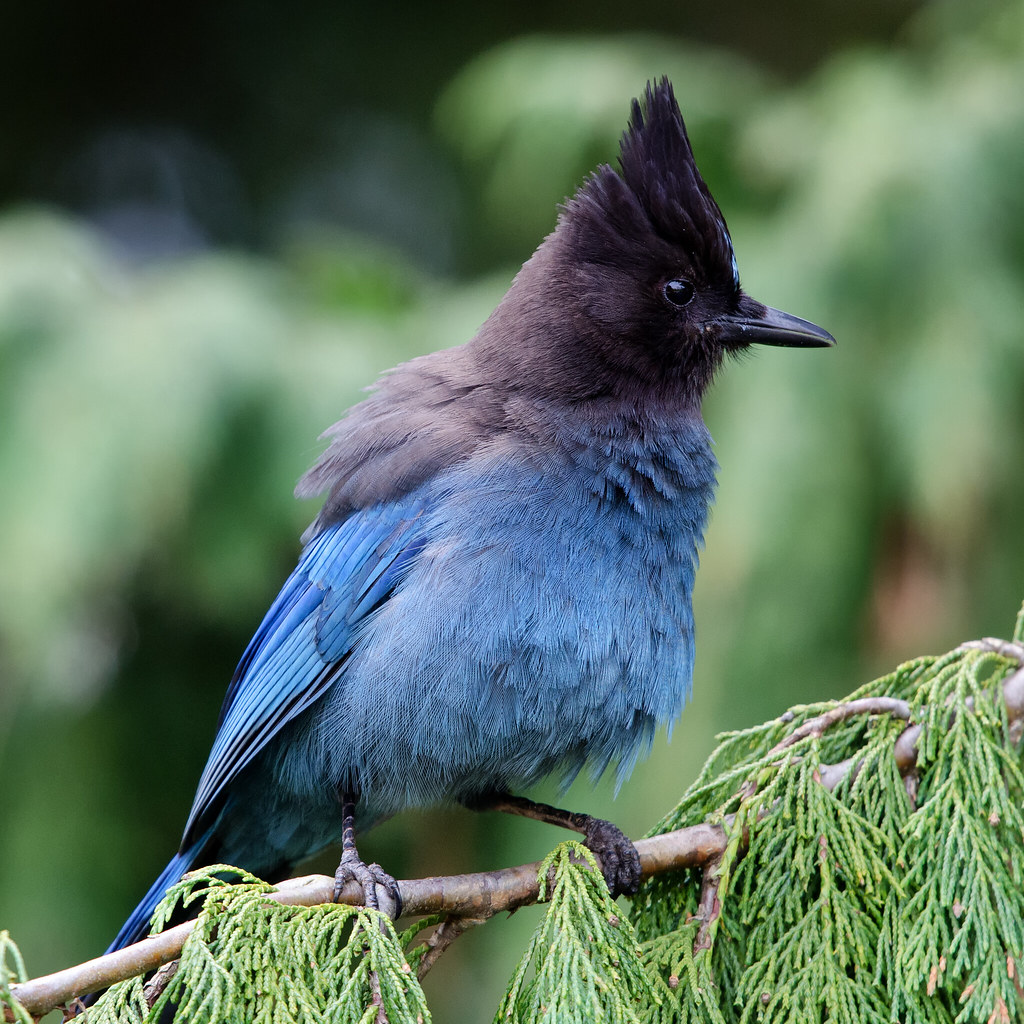
Although frequently found in North Idaho, these creatures are actually present in the coniferous forests that span the western region of the Americas – from Nicaragua all the way up to Alaska.
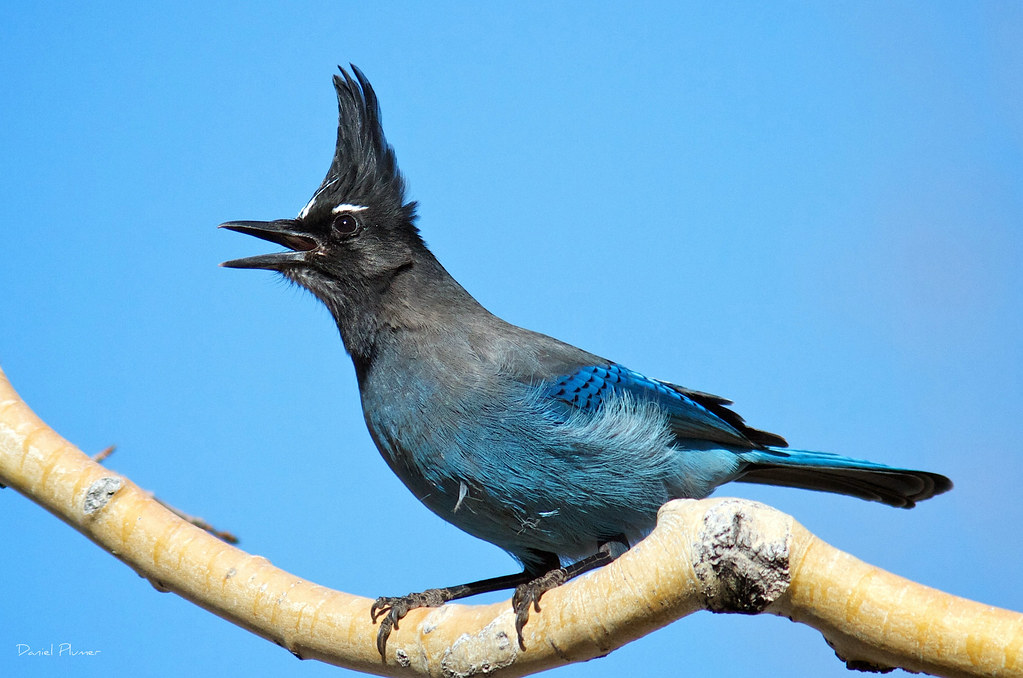
The Steller’s Jay is known to habitate mainly in forests consisting of coniferous trees, although it can also be spotted in other types of forests. These birds can be found at various elevations ranging from low to moderate, and sometimes even as high as the tree line. They are frequently seen in residential and agricultural areas that are situated near forested regions.
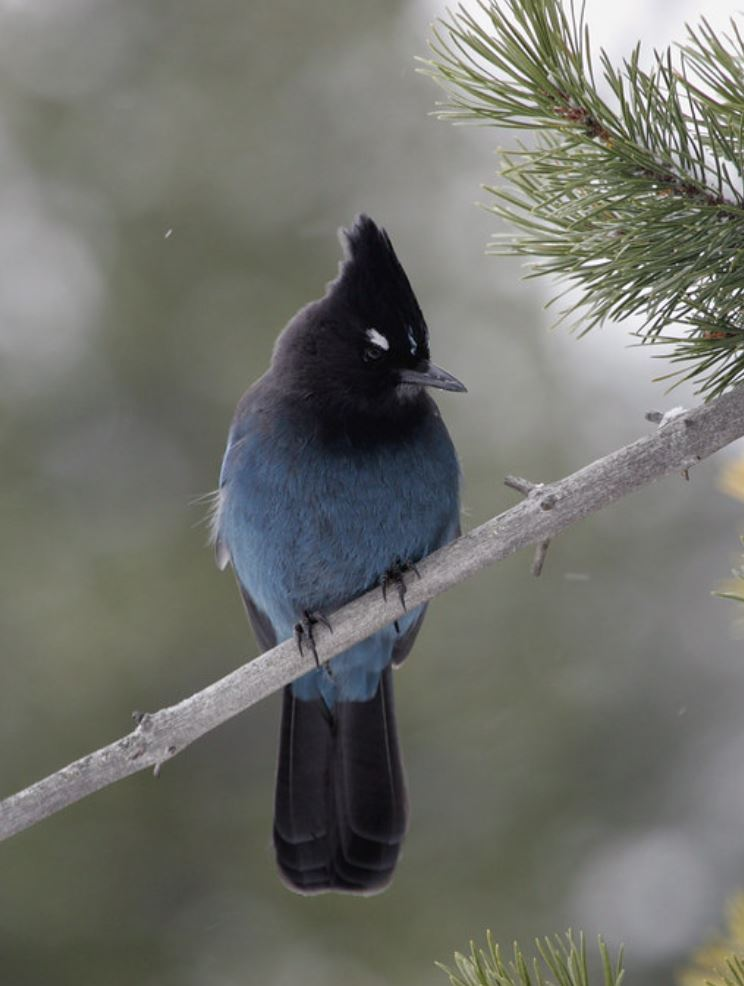
Steller’s jay is a bird that enjoys both plant and animal-based foods, making it an omnivore. When it comes to finding food, they search both on the ground and in trees. Their diet consists of a variety of seeds, nuts, berries, and fruits, along with invertebrates, rodents, eggs, and young birds in nests. On rare occasions, they have been known to consume small reptiles like snakes and lizards.
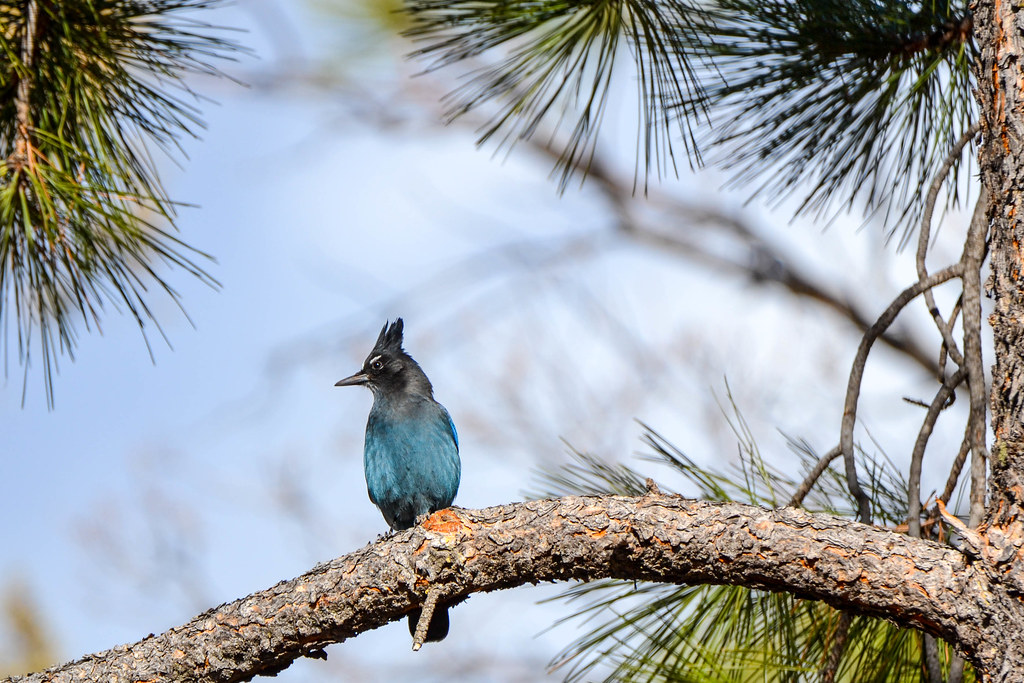
Steller’s jays are known to form monogamous pairs and the female bird usually incubates a batch of eggs for about 16 days. Meanwhile, the male bird takes care of feeding the female. The nest is commonly found in conifers but can also be located in hollows of trees or under house awnings. The nest structure is made up of both natural and scavenged materials including mud, mixed with trash. These nests typically contain two to six eggs with a smooth, glossy surface, shaped like ovals with a greenish-blue color, often speckled with varying shades of brown and olive.
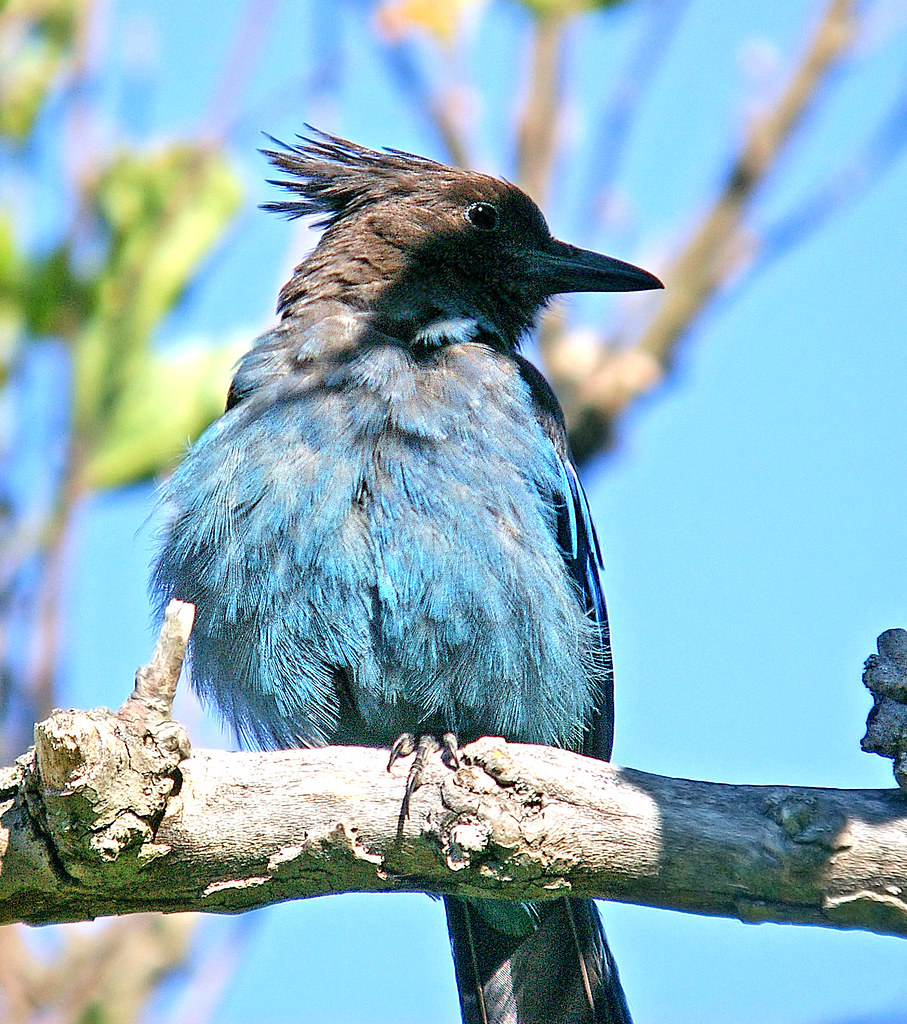
The Steller’s Jay Nest and Eggs are fascinating to observe. These birds have a unique way of building their nests, typically using coniferous trees as support. The nest is made of sticks, twigs, and grass, and is lined with softer materials such as moss and hair.
Steller’s Jays lay their eggs in the spring, typically between March and June, and the eggs are a beautiful shade of blue with black speckles. The female will lay 2-6 eggs, which take about 17 days to hatch. Once the chicks are born, both parents work tirelessly to feed and care for them until they are ready to leave the nest, which is usually around 3 weeks after hatching.
It’s truly incredible to see these birds build their home and raise their young. If you ever have the opportunity to observe a Steller’s Jay nest, consider yourself lucky!
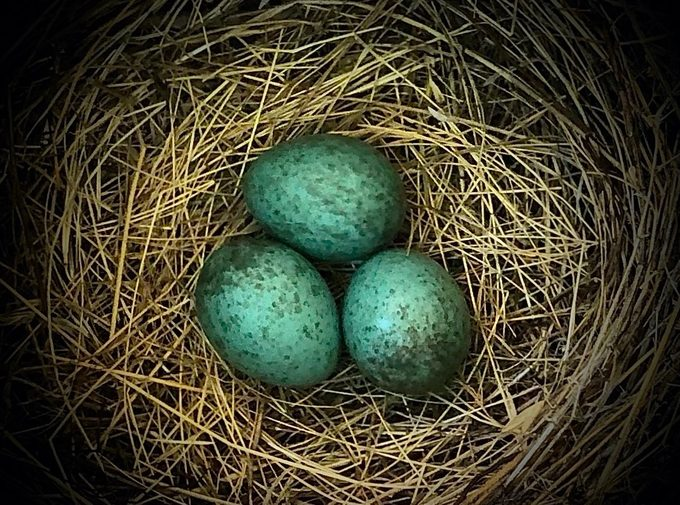
Adult Steller’s jays are believed to be monogamous and form lifelong partnerships. During courtship, they exhibit feeding behavior and flaunt their crests as well as bright blue feathers. The breeding season sees the pair gathering materials like pine needles, twigs, grasses, and mud to construct a cup-shaped nest. Female Steller’s jays then lay and incubate up to six blue-green eggs with dark brown spots.
Steller’s jays are widespread throughout their habitat and can often be seen hanging out with other species of jays like the California Scrub jay. Despite being widely spread, the Steller’s jay is classified as “Least Risk” on the IUCN red list.
